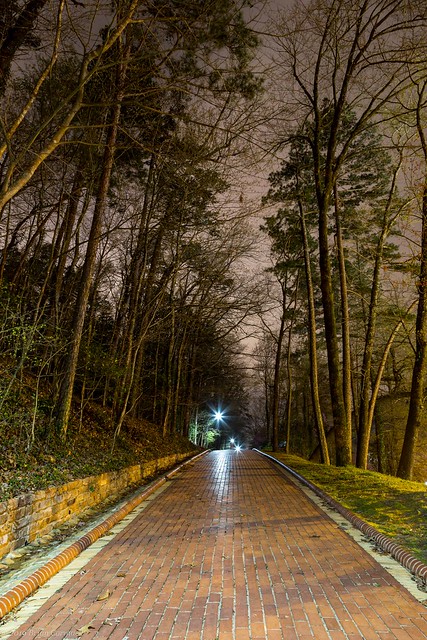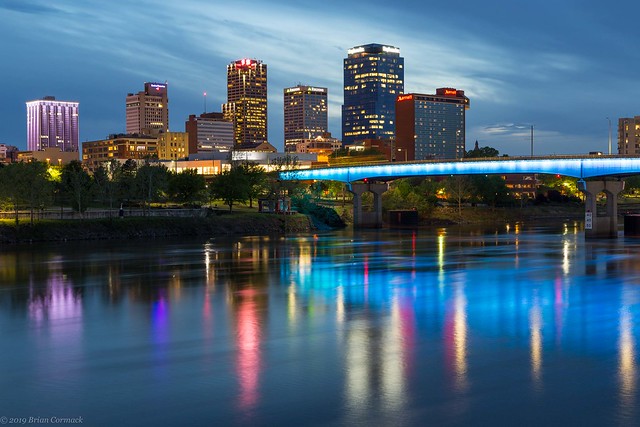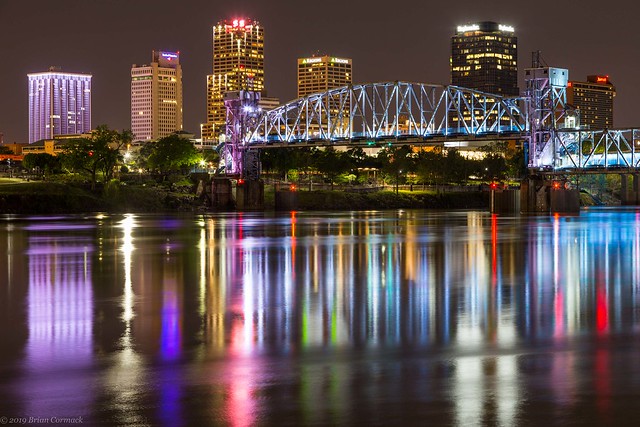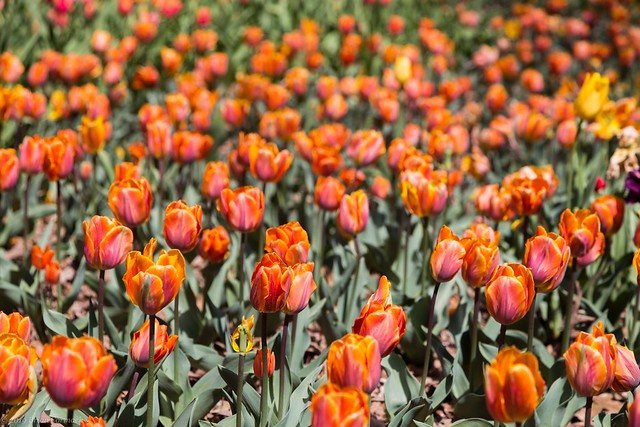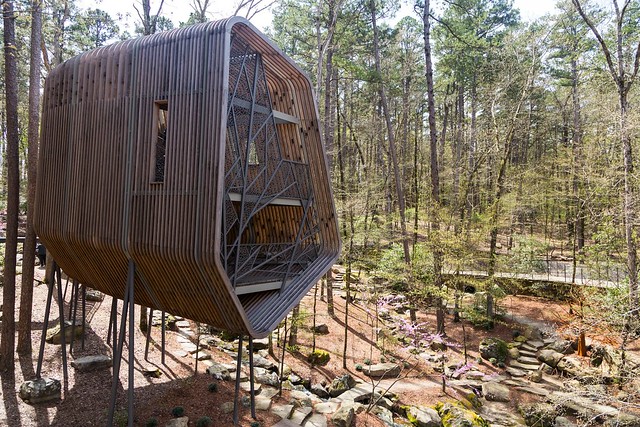I wonder what some people think when they visit Hot Springs. Are they thinking that it's going to be some massive National Park like Yellowstone? Or one filled with vast landscapes and herds of wild animals? Hot Springs National Park is many things, but it is not a pristine and unspoiled wilderness. It is small and surrounded by a city, and most of the wildlife you see are wacky tourists and locals (who can be just as entertaining as what you'd see out in nature).
But what Hot Springs really excels at is history and architecture. In terms of just history, Hot Springs might be one of the most unique national parks in the system. The park is technically the oldest national park - the 47 thermal springs were first protected by the federal government in 1832 (40 years before Yellowstone and before Arkansas was officially admitted as a state). The city that grew up and around the springs became a famous spa, attracting millions of visitors over many decades. It also helped that illegal gambling was rampant in the city.
The gambling ceased in the 1960s, which coincided with people deciding that they didn't need to take long intensive baths to stay healthy. So while Hot Springs remained a tourist town (thanks to the Oaklawn horse track and nearby lakes), only one of the opulent bathhouses would remain open. They would sit empty for awhile, until the National Park Service instituted a program that renovated and opened them up to new life. Now the bathhouses are home to shops, spas, galleries and even a brewery.
I'm really fond of Hot Springs - there are tons of neat things to take pictures of there. We recently spent the weekend in the city, and on Friday night went and walked along Central Avenue. Besides the fancy bathhouses, there is tons of neat architecture to see along Central. One of my favorite buildings in Hot Springs is the Old Medical Arts Building. It was built in 1930 and was the tallest building in Arkansas until 1960. But now, all but the first floor of the building is empty and unused. But hopefully it can be renovated soon enough (for more pics of the Medical Arts Building, click
HERE).

From there I scurried up the sidewalk that steeply goes up the hill, and got a few shots from the Grand Promenade. This is the view looking down at the Medical Arts Building, Central Avenue and the Arlington Hotel (which was built in 1924).
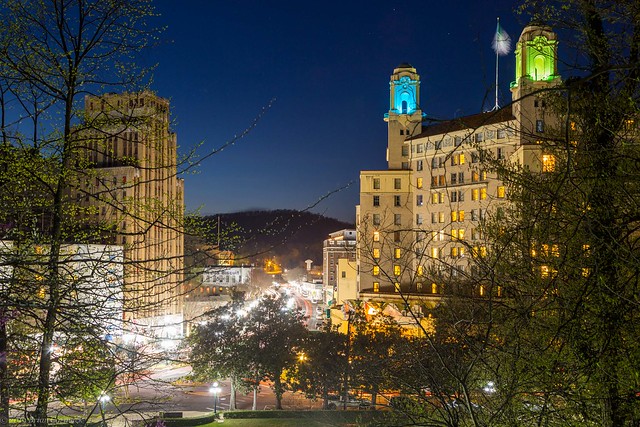
This was actually taken right above the display spring, and you can see some steam rising up at the bottom of the picture.

And the view looking down Central Avenue, with the Superior Bathhouse on the left. The bathhouse is now a brewery, which uses the thermal spring water in their beer (which is also really good). The bathhouse was built in 1916 and operated until 1983.

And another shot of Central Avenue, with the kind of traffic you'd expect on a Friday night. In this shot you can see the Waters Hotel and the Ohio Club.

Further down Bathhouse Row is the Quapaw Bathhouse, which was built in 1922 and operated until 1984. In 2008, it reopened as a modern spa.
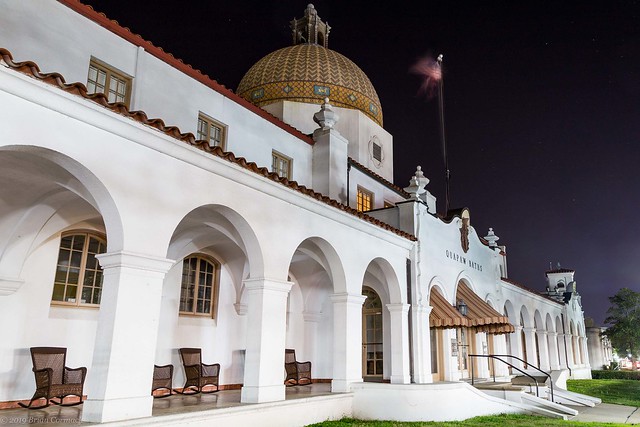
The only bathhouse to have never closed is the Buckstaff Bathhouse, which opened in 1912. If you like, you can take a bath there just like people used to in the 1930s.
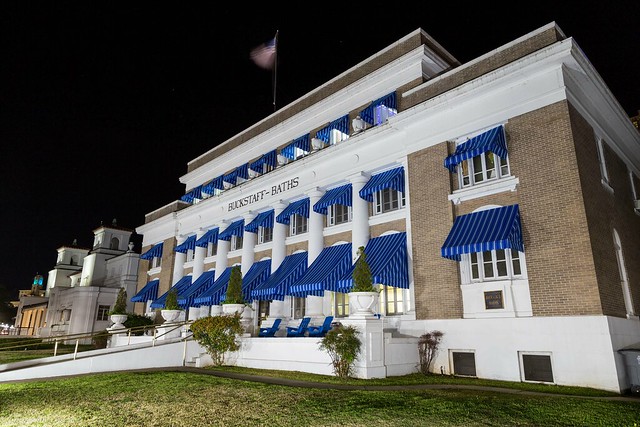
At the far end of Bathhouse Row you can see the massive Army and Navy Hospital, which was built in the 1930s. The hospital was the nation's first military hospital, originally opening here in 1887. Over the years the hospital treated a wide variety of patients, including Al Jolson, Helen Keller and General John Pershing. In 1960, the federal government sold the building to the state of Arkansas and it's now used as a Rehabilitation Center.
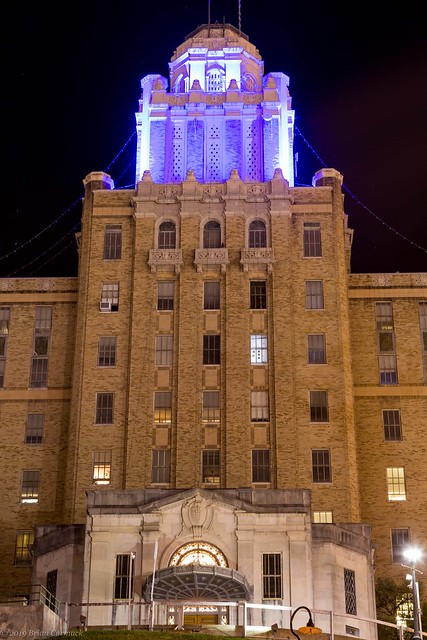
Walking back I passed through the Arlington Lawn, which got its name because it was actually the site where the first two Arlington Hotels were built. The very first hotel was built here in 1875, which was then replaced by a newer structure in 1893. That building burned to the ground in 1923, causing an estimated $1.6 million in damages (in 1920s money, that would be about the equivalent of $23 million today).
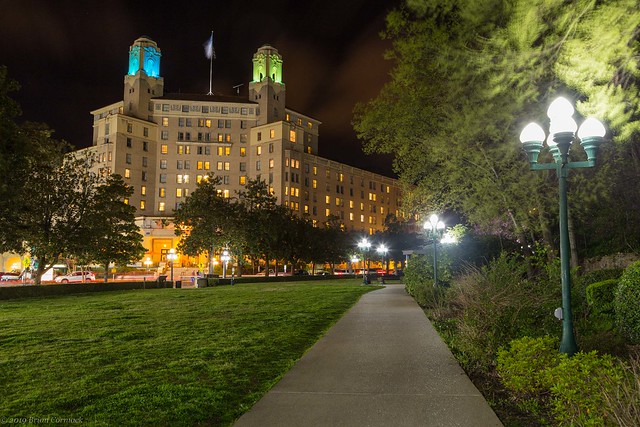
And one last shot of the Medical Arts Building, as a few clouds drifted by.

And then one last shot from the night, from along the Grand Promenade which runs along the hillside above the bathhouses.
